Non-host defense response in a novel Arabidopsis-Xanthomonas citri subsp. citri pathosystem
- PMID: 22299054
- PMCID: PMC3267768
- DOI: 10.1371/journal.pone.0031130
Non-host defense response in a novel Arabidopsis-Xanthomonas citri subsp. citri pathosystem
Abstract
Citrus canker, caused by Xanthomonas citri subsp. citri (Xcc), is one of the most destructive diseases of citrus. Progress of breeding citrus canker-resistant varieties is modest due to limited resistant germplasm resources and lack of candidate genes for genetic manipulation. The objective of this study is to establish a novel heterologous pathosystem between Xcc and the well-established model plant Arabidopsis thaliana for defense mechanism dissection and resistance gene identification. Our results indicate that Xcc bacteria neither grow nor decline in Arabidopsis, but induce multiple defense responses including callose deposition, reactive oxygen species and salicylic aicd (SA) production, and defense gene expression, indicating that Xcc activates non-host resistance in Arabidopsis. Moreover, Xcc-induced defense gene expression is suppressed or attenuated in several well-characterized SA signaling mutants including eds1, pad4, eds5, sid2, and npr1. Interestingly, resistance to Xcc is compromised only in eds1, pad4, and eds5, but not in sid2 and npr1. However, combining sid2 and npr1 in the sid2npr1 double mutant compromises resistance to Xcc, suggesting genetic interactions likely exist between SID2 and NPR1 in the non-host resistance against Xcc in Arabidopsis. These results demonstrate that the SA signaling pathway plays a critical role in regulating non-host defense against Xcc in Arabidopsis and suggest that the SA signaling pathway genes may hold great potential for breeding citrus canker-resistant varieties through modern gene transfer technology.
Conflict of interest statement
Figures
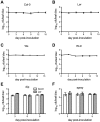


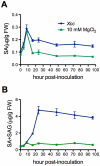
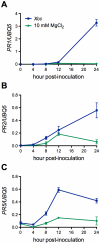

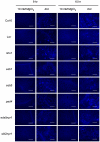
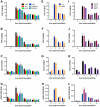

Similar articles
-
The Arabidopsis Elongator complex is required for nonhost resistance against the bacterial pathogens Xanthomonas citri subsp. citri and Pseudomonas syringae pv. phaseolicola NPS3121.New Phytol. 2017 May;214(3):1245-1259. doi: 10.1111/nph.14442. Epub 2017 Jan 30. New Phytol. 2017. PMID: 28134437
-
Responsiveness of different citrus genotypes to the Xanthomonas citri ssp. citri-derived pathogen-associated molecular pattern (PAMP) flg22 correlates with resistance to citrus canker.Mol Plant Pathol. 2015 Jun;16(5):507-20. doi: 10.1111/mpp.12206. Epub 2014 Oct 27. Mol Plant Pathol. 2015. PMID: 25231217 Free PMC article.
-
Genome-wide identification and expression analyses of ABSCISIC ACID-INSENSITIVE 5 (ABI5) genes in Citrus sinensis reveal CsABI5-5 confers dual resistance to Huanglongbing and citrus canker.Int J Biol Macromol. 2025 May;306(Pt 4):141611. doi: 10.1016/j.ijbiomac.2025.141611. Epub 2025 Feb 28. Int J Biol Macromol. 2025. PMID: 40024407
-
Plant responses underlying nonhost resistance of Citrus limon against Xanthomonas campestris pv. campestris.Mol Plant Pathol. 2019 Feb;20(2):254-269. doi: 10.1111/mpp.12752. Epub 2018 Oct 31. Mol Plant Pathol. 2019. PMID: 30260546 Free PMC article.
-
Dissection of salicylic acid-mediated defense signaling networks.Plant Signal Behav. 2009 Aug;4(8):713-7. doi: 10.4161/psb.4.8.9173. Epub 2009 Aug 3. Plant Signal Behav. 2009. PMID: 19820324 Free PMC article. Review.
Cited by
-
Comparative analysis of infected cassava root transcriptomics reveals candidate genes for root rot disease resistance.Sci Rep. 2024 May 8;14(1):10587. doi: 10.1038/s41598-024-60847-4. Sci Rep. 2024. PMID: 38719851 Free PMC article.
-
Comparative pathobiology of Heterobasidion annosum during challenge on Pinus sylvestris and Arabidopsis roots: an analysis of defensin gene expression in two pathosystems.Planta. 2014 Mar;239(3):717-33. doi: 10.1007/s00425-013-2012-z. Epub 2013 Dec 24. Planta. 2014. PMID: 24366684
-
Albugo-imposed changes to tryptophan-derived antimicrobial metabolite biosynthesis may contribute to suppression of non-host resistance to Phytophthora infestans in Arabidopsis thaliana.BMC Biol. 2017 Mar 20;15(1):20. doi: 10.1186/s12915-017-0360-z. BMC Biol. 2017. PMID: 28320402 Free PMC article.
-
An MKP-MAPK protein phosphorylation cascade controls vascular immunity in plants.Sci Adv. 2022 Mar 11;8(10):eabg8723. doi: 10.1126/sciadv.abg8723. Epub 2022 Mar 9. Sci Adv. 2022. PMID: 35263144 Free PMC article.
-
Structure-function relationship of a citrus salicylate methylesterase and role of salicylic acid in citrus canker resistance.Sci Rep. 2019 Mar 7;9(1):3901. doi: 10.1038/s41598-019-40552-3. Sci Rep. 2019. PMID: 30846791 Free PMC article.
References
-
- Gottwald TR, Graham JH, Civerolo EL, Barrett HC, Hearn CJ. Differential host range reaction of citrus and citrus relatives to citrus canker and citrus bacterial spot determined by leaf mesophyll susceptibility. Plant Dis. 1993;77:1004–1009.
-
- Graham JH, Leite RP. Lack of control of citrus canker by induced systemic resistance compounds. Plant Dis. 2004;88:745–750. - PubMed
-
- Zhang X, Francis MI, Dawson WO, Graham JH, Orbović V, et al. Over-expression of the Arabidopsis NPR1 gene in citrus increases resistance to citrus canker. Eur J Plant Pathol. 2010;128:91–100.
-
- Viloria Z, Drouilard DL, Grahm JH, Grosser JW. Screening triploid hybrids of ‘Lakeland’ Limequat for resistance to citrus canker. Plant Dis. 2004;88:1056–1060. - PubMed
-
- Mishina TE, Zeier J. Bacterial non-host resistance: interaction of Arabidopsis with non-adapted Pseudomonas syringae strains. Physiol Plant. 2007;131:448–461. - PubMed
Publication types
MeSH terms
Substances
LinkOut - more resources
Full Text Sources
Molecular Biology Databases
Miscellaneous

